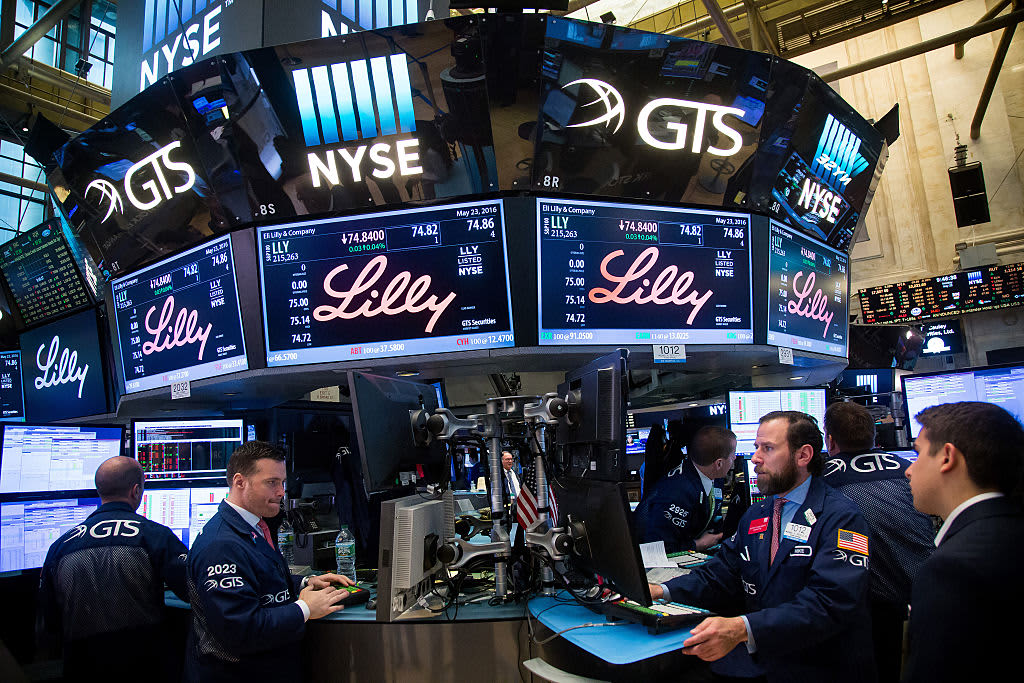
The Health and Human Services Department plans to publish in September a list of 10 drugs covered by Medicare that it will target for price negotiations, the first phase in a long awaited effort to cut costs for seniors.
HHS officials, in a call with reporters on Wednesday, laid out the federal government’s road map for negotiating drug prices through historic new powers it gained under the Inflation Reduction Act. The IRA, signed into law by President Joe Biden in August, empowers HHS to negotiate prices directly with pharmaceutical companies for drugs that cost Medicare Parts D and B the most money.
related investing news


Medicare Part D covers prescription drugs that seniors fill at retail pharmacies. Part B covers more specialized drugs that are typically administered in doctors offices or hospitals.
In the first phase of the program, Health Secretary Xavier Becerra will select 10 drugs from a list of the 50 most expensive for Medicare Part D. To be eligible, the drug must have been on the market for at least seven years without generic competition, or 11 years in the case of biological products such as vaccines.
The health secretary will make the list public in September 2023, and HHS will make its initial offer to the pharmaceutical companies in February 2024. The companies will have 30 days to accept the offer or propose a counter offer.
The negotiations will end in August 2024, and HHS will publish the agreed upon costs in September. The negotiated prices for those 10 Medicare Part D drugs will go into effect in January 2026.
Under the Inflation Reduction Act, certain drugs are exempt from the negotiations. This includes drugs for rare diseases, plasma or blood-derived products, drugs developed by small biotech companies and drugs that Medicare spends less than $200 million on.
HHS has not yet tipped it cards about which drugs it is eyeing. The most current publicly available data on Medicare Part D drug spending is two years old. The federal government will use Medicare spending data from June 2022 through May 2023 to guide its selection.
These were the most expensive drugs for Medicare Part D in 2020, according to an analysis of data from the Center for Medicare and Medicaid Services by Bank of America in August. The products may not be part of the eventual price negotiations due to generic competition or a change in Medicare expenditures.
- Bristol-Myers’ Eliquis, $9.9 billion. It is an anticoagulant to prevent blood clotting to reduce the risk of stroke.
- Bristol Myers‘ Revlimid, $5.4 billion. It is a pill used to treat multiple myeloma.
- J&J’s Xarelto, $4.7 billion. It is another blood thinner.
- Merck’s Januvia, $3.8 billion. It is a pill to lower blood sugar for people with type 2 diabetes.
- Eli Lilly‘s Trulicity, $3.2 billion. An injection that helps people with type 2 diabetes release insulin.
- Abbvie’s Imbruvica, $2.9 billion. It is a pill for different types of blood cancers.
- Sanofi’s Lantus Solostar, $2.7 billion. It is an insulin pen for diabetes.
- Eli Lilly‘s Jardiance, $2.4 billion. It is a pill to lower blood sugar for type 2 diabetes.
- Abbvie“s Humira, $2.2 billion. It is a monoclonal antibody to treat rheumatoid arthritis.
- Pfizer‘s Ibrance, $2.1 billion. It is a pill to treat breast cancer.
- AstraZeneca‘s Symbicort, $1.98 billion. An inhaler that treats asthma and COPD.
Many of the drugs relate to prevention or treatment of diabetes, blood clots or cancers.
In the program’s second phase, HHS will select another 15 Medicare Part D drugs to negotiate, with prices taking effect in 2027.
In the third phase, the federal government can negotiate Part B drugs, with prices taking effect in 2028.
In phase four, HHS will negotiate prices for 20 Part B or D drugs, taking effect in 2029. The federal government can negotiate 20 drugs in all subsequent years.
Bank of America, in an August analyst note, estimated that the negotiations could reduce drug prices by 25% in the long run for the 25 drugs on which Medicare spends the most.






